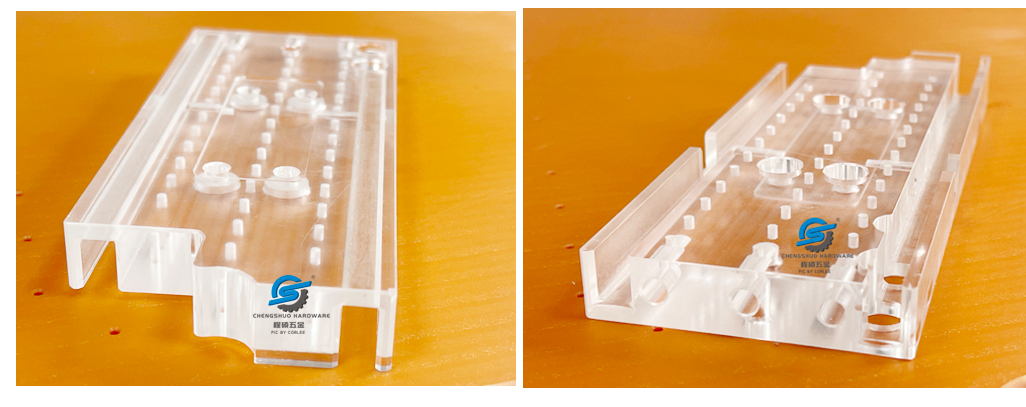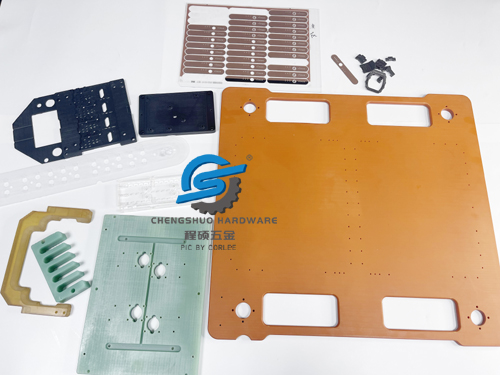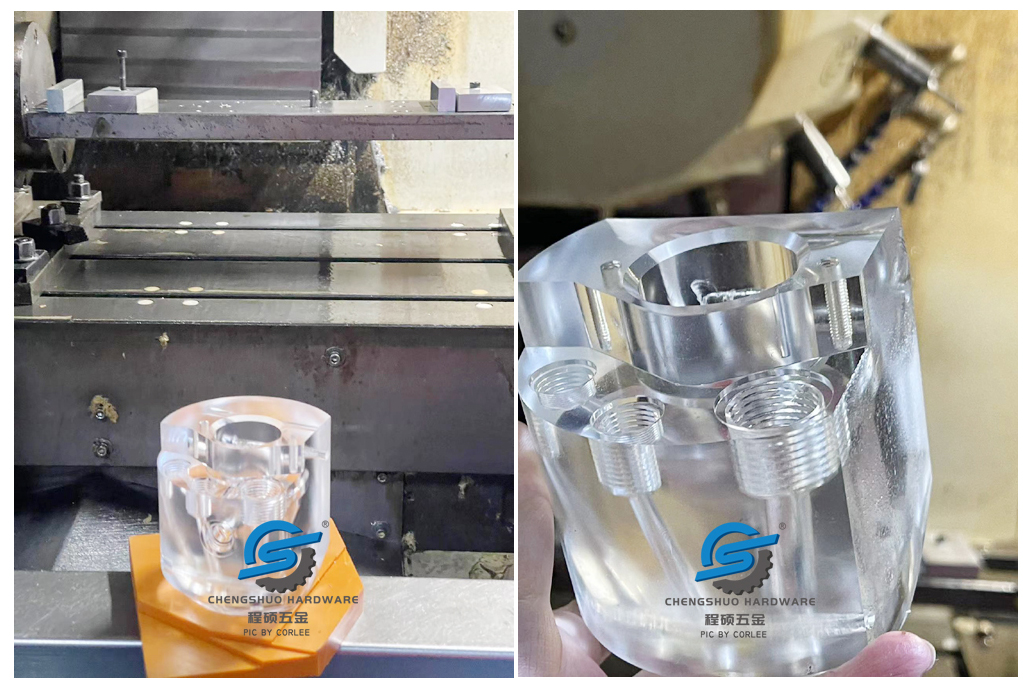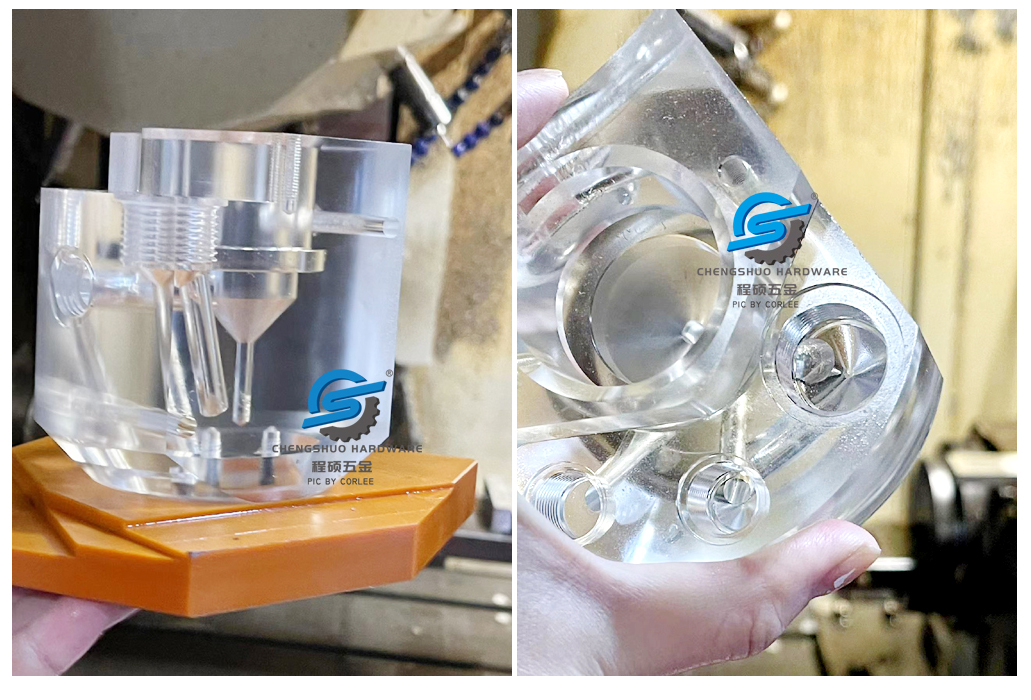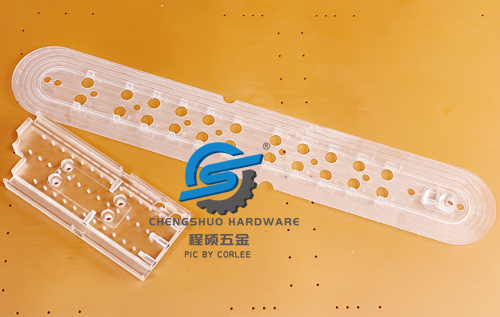CNC machining of acrylic products can achieve more complex structures, reduce cracks in the acrylic material during machining, and meet high-precision requirements for products.
Polymethyl methacrylate (CH3│—[—CH2—C——]—│COOCH3) has good comprehensive mechanical properties, ranking among the best among general plastics. Its tensile, bending, and compression strengths are higher than polyolefin, and also higher than polystyrene, polyvinyl chloride, etc., but its impact toughness is poor. But it’s also slightly better than polystyrene.physical properties.
PMMA has high mechanical strength: the relative molecular mass of PMMA is about 2 million. It is a long-chain polymer, and the chains forming the molecule are very soft. Therefore, PMMA has relatively high strength and is resistant to stretch and impact. 7 to 18 times higher than ordinary glass.There is a kind of organic glass that has been heated and stretched, in which the molecular segments are arranged in a very orderly manner, which significantly improves the toughness of the material.
Acrylic is commonly used in industry to produce and manufacture instrument panel panels and covers, also for various surgical and medical equipments, household items: bathroom facilities, handicrafts, cosmetics, brackets, aquariums, etc..
When using CNC to process acrylic products, need to pay attention to the following points:
1. CNC Programming Design For Acrylic Machining Processing
For acrylic (Polymethyl methacrylate, PMMA), the programming details of the product should be designed according to the shape of the product, such as the tool feed speed and rotation speed during machining processing. According to the actual shape of the product, the programming process and flow should be optimized to reduce destructiveness during the processing.
When using CNC machining acrylic, it is very important to set the correct feed rate. If the feed rate is too fast, PMMA may break due to extreme cutting pressure. Fast feed rates can also cause parts to move out of the workholding fixture or leave imperfections on the part; slow feed rates can also produce inaccurate parts with rough, unfinished surfaces.
2. The Selection Of Tools In Acrylic Processing Must Be Appropriate
Processing acrylic sheets requires the use of appropriate tools. Depending on the shape of the tool, commonly used tools include end mills, ball nose cutters, flat cutters, etc. The flat cutter is suitable for cutting and cleaning large areas, the end mill is in the shape of a right angle and is suitable for processing the edges of text and graphics, and the ball nose cutter is in the shape of an arc and is suitable for processing very precise patterns and curves.
The material of the knife is also important. For example, high-speed steel cuts acrylic, but does not provide a good surface finish. Diamond tools can improve surface finish but are very expensive. Carbide is often the material of choice for CNC cutting acrylic.
For CNC machining acrylic, it is also recommended to use a cutting edge rake angle of 5 degrees and a supplementary angle of 2 degrees
In addition to the cutting tool, must also pay attention to the cutting depth, speed, etc. when processing acrylic products to ensure that the structure of the acrylic raw material is not damaged. Acrylic is generally a relatively fragile material. During CNC cutting, using appropriate tools and appropriate cutting depth and speed can avoid processing scraps caused by material cracking or sliding. In continuous cutting, it is necessary to grasp the actual processing speed and depth of the tool, and try to ensure that the material structure is not damaged, such as fragmentation, disconnection, etc. At the same time, attention should be paid to minimizing heat and static electricity during the processing.
3. Use The Correct Drill Bit And Bevel
Make sure the drill can effectively create holes in acrylic by choosing the right drill material. Carbide is an excellent choice for drilling acrylic, and many manufacturers use O-groove end mill drill bits specifically designed for cutting and drilling acrylic. Additionally, drill bits need to be kept sharp, dull drill bits will produce less-than-clean edges and can easily lead to stress cracking and cracks.
When CNC machining acrylic, it is best to use a bevel with a drill bit. In order to prevent the drill bit from damaging the components of the acrylic material, it needs to be tilted downward along a smooth slope to prevent damage and ensure a smooth surface.
At the same time, the cutting depth and direction must be monitored. The rotation direction of the CNC tool: left and right, or counterclockwise and clockwise, must be reasonably adapted to the product to ensure the accuracy of product implementation and design functions.
Post time: Jan-16-2024


